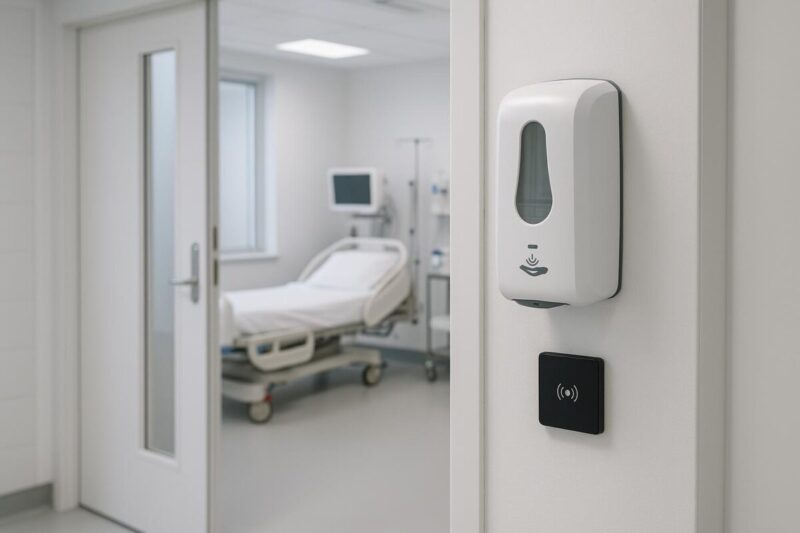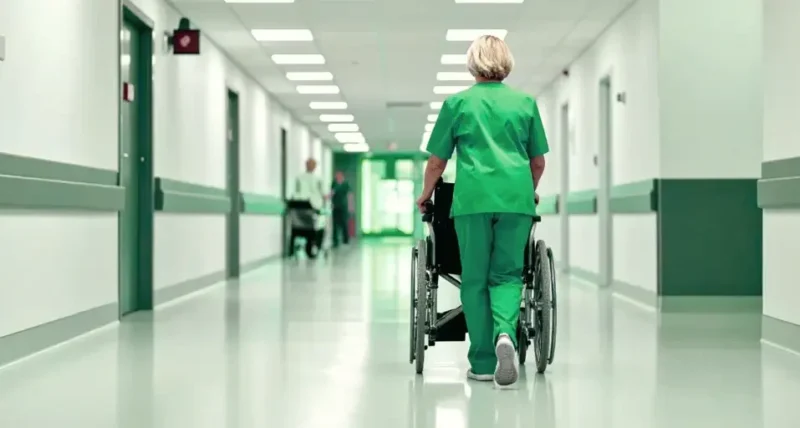healthcare technology

Unlocking a New Era of Efficiency and Safety with Real-Time Location Systems
Hospital administrators and technology managers face the immense challenge of balancing exceptional patient care with operational excellence. In a complex environment where every second matters, inefficiencies like lost equipment, workflow bottlenecks, and staff safety concerns can significantly impact outcomes and budgets. A powerful technology is reshaping this landscape: the Real-Time Location System (RTLS). By providing precise, instantaneous location data for assets, staff, patients, RTLS for hospitals moves beyond simple tracking to become a central nervous system for a smarter, safer, and more streamlined healthcare facility.
What is RTLS and How Does It Work in a Hospital?
A Real-Time Location System is a combination of hardware (tags and sensors) and software that automatically identifies and tracks the location of objects or people in real time, typically within a building or a confined area. In a hospital, small, low-power tags are attached to medical devices, worn by staff members on badges, or given to patients in wristbands.
These tags transmit signals to a network of sensors placed throughout the facility. The system's software then analyzes these signals to calculate the precise location of each tag. This information is displayed on a digital map or dashboard, providing administrators and clinical staff with complete, enterprise-wide visibility. This is not just about finding things; it's about understanding movement, interaction, and status to drive intelligent action.
Key Applications Transforming Hospital Workflows
Streamlining Hospital Asset Management
Nurses can spend a significant portion of their shifts searching for equipment like infusion pumps, vital signs monitors, and wheelchairs. This lost time directly impacts patient care. An RTLS solution transforms hospital asset management by providing an instant, accurate location for every tagged device. This eliminates search time, reduces equipment hoarding, prevents theft, and optimizes utilization rates. By analyzing usage data, hospitals can make informed purchasing decisions and avoid costly over-renting of equipment.
Enhancing Staff Safety and Workflow Automation
The safety of healthcare workers is paramount. RTLS-enabled staff badges often include a duress button that can be pressed in an emergency. When activated, the system instantly alerts security personnel with the exact location of the staff member needing assistance, dramatically improving response times. Beyond emergencies, RTLS facilitates healthcare workflow automation by automatically logging key events. For example, the system can record when a nurse enters and leaves a patient room, automating rounding logs and ensuring compliance with care protocols.
Optimizing Patient Flow and Experience
From admission to discharge, a patient's journey through the hospital can be filled with delays. RTLS helps optimize patient flow by monitoring wait times in areas like the emergency department or pre-op holding. The system can automatically alert staff when a patient has been waiting too long or when an exam room becomes available. This visibility helps reduce bottlenecks, improve department throughput, and ultimately enhances the patient experience.
Ensuring Environmental and Temperature Monitoring
Hospitals store critical, temperature-sensitive assets like vaccines, blood products, and lab specimens. Manual temperature logging is prone to human error and provides only periodic data points. An environmental monitoring system integrated with RTLS uses wireless sensors to provide 24/7 monitoring. If a refrigerator or freezer deviates from its set temperature range, the system sends an immediate alert to designated staff, preventing the loss of thousands of dollars in valuable assets and ensuring regulatory compliance.
Automating Hand Hygiene Compliance
Hand hygiene is a cornerstone of infection prevention, but direct observation is resource-intensive and often inaccurate due to the Hawthorne effect. Automated hand hygiene monitoring with RTLS tracks when staff enter and exit patient rooms and correlates that location data with their use of hand sanitizer or soap dispensers. This provides objective, continuous data, helping hospitals improve compliance rates and create a safer environment for patients.
The U.S. Healthcare Landscape: RTLS as a Strategic Advantage
In the United States, healthcare providers are under constant pressure to improve quality of care while controlling costs, a core principle of value-based care. RTLS directly supports these goals. By increasing asset utilization, preventing loss, and improving staff efficiency, the technology delivers a strong return on investment. Furthermore, the data generated helps meet stringent regulatory requirements from bodies like The Joint Commission. The rich analytics and reporting capabilities allow hospitals to prove compliance with rounding, environmental controls, and safety protocols, turning raw data into actionable insights for continuous improvement.
Ready to Enhance Your Hospital's Efficiency?
Discover how ZulaFly's cloud-hosted RTLS platform can provide the visibility and data you need to elevate patient care, improve staff safety, and streamline operations. Let's build a smarter, more connected healthcare environment together.
Frequently Asked Questions (FAQ)
What is the typical ROI for an RTLS in a hospital?
The Return on Investment (ROI) for RTLS is multifaceted. Hospitals typically see significant savings from reduced equipment rental and replacement costs, improved staff productivity by minimizing search times, enhanced patient throughput, and prevention of loss of temperature-sensitive assets. The specific ROI varies based on facility size and the applications deployed.
How does RTLS differ from GPS?
GPS (Global Positioning System) relies on signals from satellites and is designed for outdoor navigation. It does not work effectively indoors. RTLS uses a local network of sensors (utilizing technologies like BLE, Radio Frequency, and Infrared) to provide precise, room-level or even sub-room-level accuracy inside buildings, which is essential for hospital operations.
Is RTLS technology difficult to install and maintain?
Modern, cloud-hosted RTLS platforms have simplified implementation. Wireless sensors and battery-powered tags minimize the need for extensive cabling. A reputable provider like ZulaFly will work with your IT and facilities teams to ensure a smooth installation process. Maintenance is typically straightforward, often involving battery replacements for tags and software updates managed by the provider.
How can RTLS improve patient safety?
RTLS enhances patient safety in several ways: ensuring medical equipment is properly maintained and available when needed, automating hand hygiene to reduce hospital-acquired infections, and empowering faster responses to staff emergencies, which creates a safer environment for caregivers and patients alike. For facilities with at-risk patients, it can also power wander management solutions.
Glossary of Terms
RTLS (Real-Time Location System): A technology platform used to automatically identify and track the location of assets and people in real time within a defined space.
Bluetooth Low Energy (BLE): A wireless communication technology used by many modern RTLS tags due to its low power consumption, allowing for long battery life.
Sensor (or Receiver): A hardware device installed in the facility that detects signals from RTLS tags to determine their location.
Tag: A small, battery-powered device attached to an asset or worn by a person that transmits a unique signal for identification and location tracking.
Workflow Automation: The use of technology to automate manual processes. In an RTLS context, this could mean automatically logging when a nurse completes patient rounds or when a piece of equipment enters a sterilization area.
EMR (Electronic Medical Record): A digital version of a patient's paper chart. Advanced RTLS platforms can integrate with EMR systems to link location data with patient information.



